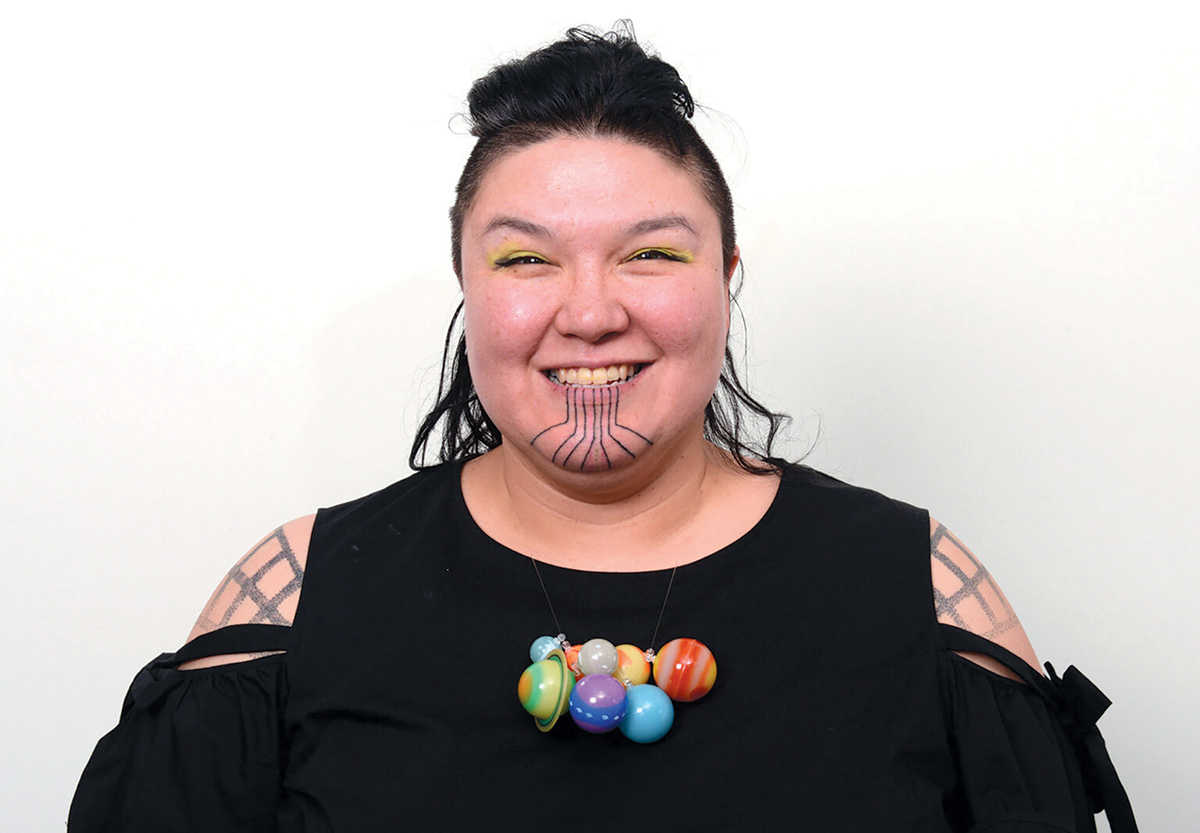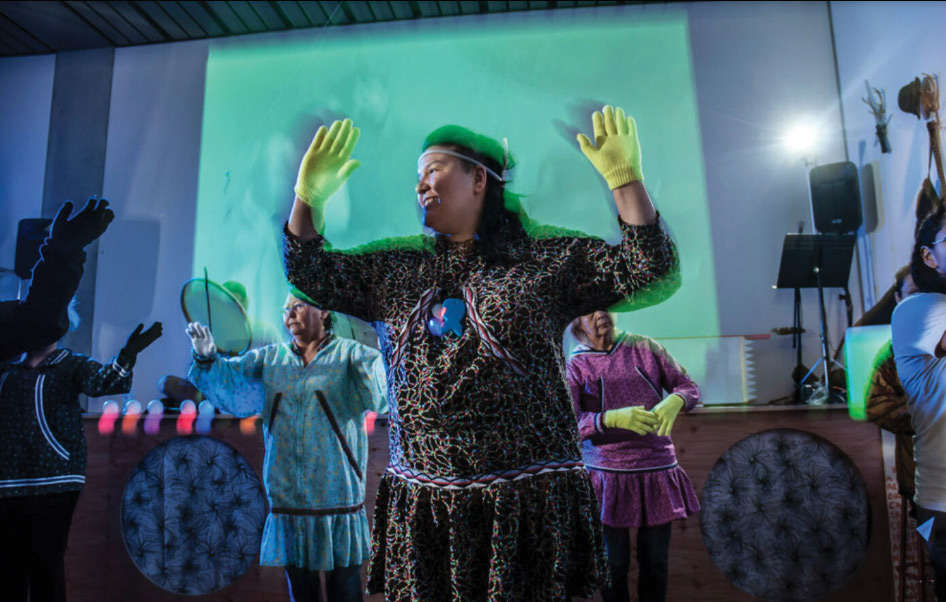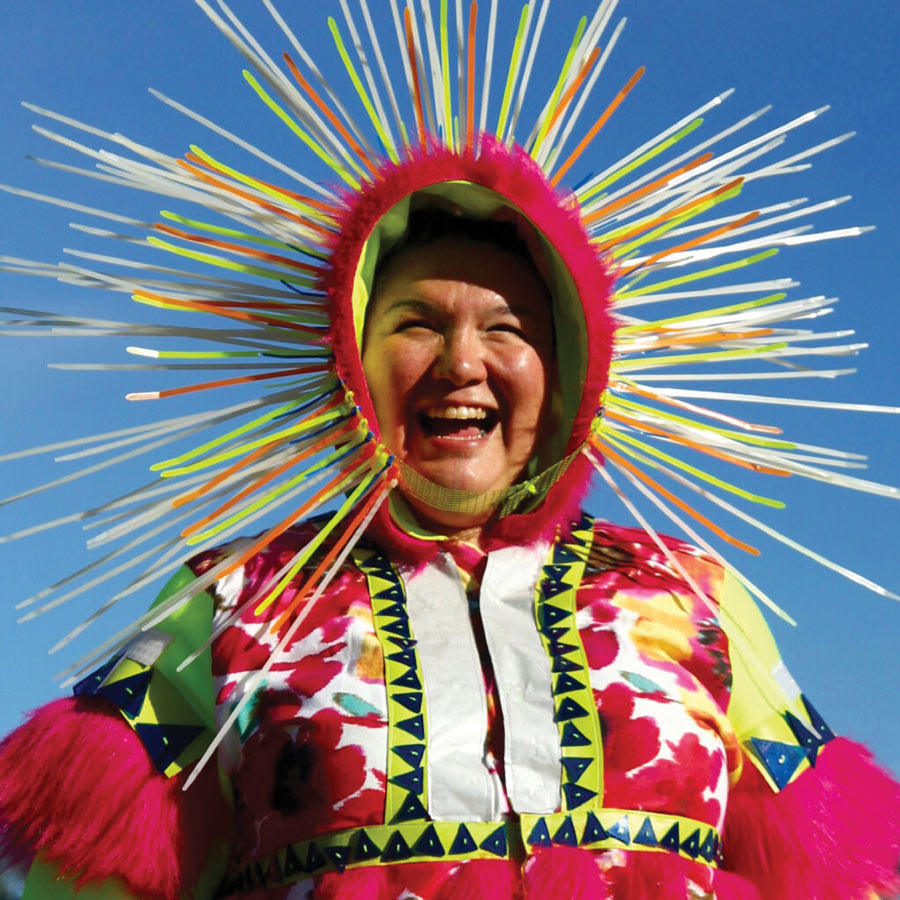


ART/HEALING/WISDOM
llison Akootchook Warden is an interdisciplinary Iñupiaq artist born in Fairbanks, Alaska, with families ties to the Native village of Kaktovik. Her work is focused on performance, rap, installation and poetry. Akootchook found her calling to become an artist at a young age: “As a young Iñupiaq, I saw the impacts of the rapid colonization of my traditional homelands and how they manifested as disease in myself and also my family. I heard stories of my great-great grandfather and also my great-great grandmother, how they would utilize traditional methods to heal their communities collectively, and at a young age, I began to look towards the arts as a vehicle for possible neo-traditional community healing methods. My grandmother was known for getting audiences to laugh, and at a young age she recognized my talent in the performing arts and encouraged me to carry our Iñupiaq culture forward in unconventional ways.”
Among her recent work is the multimedia installation and two-month performance piece Unipkaaġusiksuġuvik (the place of the future/ancient), held at the Anchorage Museum in 2016. Akootchook created a futuristic version of a qargi (ceremonial and community house in the Iñupiaq language) and led events with audience participation. She described it a space “where the hyper-future meets the super-ancient, a liminal space where myths are born and the Eagle Mother is honored with ceremony and dance.”

photo by MICHAEL CONTI, courtesy of ALLISON WARDEN.

Akootchook shared that from a young age the people in her life—teachers, family and others around her—supported and inspired her in exploring the arts. One person was the non-Native artist Claire Fejes. “She was [already] pretty famous as an artist and my babysitter,” Akootchook said. “She soon recognized I was an artist, encouraged me, and even gave me a painting as a child. I remember her acknowledging that she saw something in me that reminded her of what she did in her early years.”
PERFORMER AND POET
Regarding her performance art, Akootchook shared, “I have to say from my personal experience, I was seeking to stretch the content of what is available for Alaska Native artists. I appreciate artists like James Luna.” Luna (1950-2018) was a Puyukitchum/Ipai/Mexican-American Indian performance artist, photographer and multimedia installation artist. His work is well known for challenging the status quo within conventional museum exhibitions and how they present Native Americans.